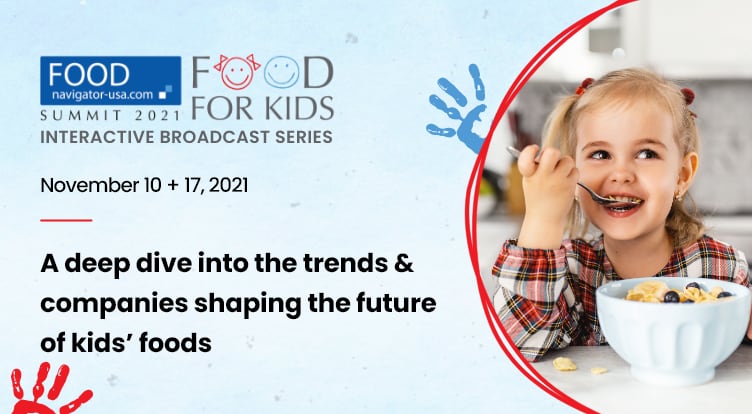“We know that moms prefer fresh, natural homemade foods. However, in reality, this isn’t always what they give their babies all the time,” Toni Farinella, DSM segment lead, early life nutrition and nutrition improvement told attendees last week during part 1 of FoodNavigator-USA’s Food For Kids Summit.
[Editor’s note: If you missed the first day of our Food For Kids Summit, you can still catch it on demand HERE. Day 2 on Nov. 17 will focus on children’s snacks. Register HERE.]
Pointing to results from DSM’s proprietary online survey of mothers conducted this spring, Farinella noted only around 40% of US moms say they always or mainly feed homemade baby food. The top reasons for choosing homemade baby food are that it is fresh (51%), ‘more natural’ (48%) or more convenient because their babies eat what the rest of the family eats, just in a different format and texture (41%), according to the survey.
However, as Farinella notes, despite mothers’ “good intentions” to favor homemade food, about 60% feed their children packaged baby food at least half the time, according to the survey. Of these, 16% always use packaged baby food and 24% use mostly packaged food, but sometimes serve homemade options.
Baby and toddler food manufacturers can further tip the scales in their favor by adding fortification, suggests the survey results.
“Adding fortification to food changes how open moms are to serving packaged foods,” Farinella explained, pointing to survey results that found 49% of moms who currently use packaged foods are open to using packaged baby snacks if they are fortified, 45% feel the same about fortified baby yogurt, 44% about packaged meals and 44% about pouch baby food.
Fortification can also help win over moms who currently don’t use packaged food, the data suggests. It found 27% of moms who do not use packaged food are open to using fortified packaged meals , baby drinks and toddler milk, and 25% are open to fortified baby yogurt. An additional 22% are open to fortified baby biscuits, the survey revealed.
“This is a huge opportunity, and perceived gap in the market,” Farinella said.
Most moms recognize value of letter vitamins, but not choline, lutein, lactoferrin and others
When it comes to the type of fortification that moms are most interested in, they have a high awareness of letter vitamins, iron, folic acid, calcium, probiotics and the omegas, “but there are opportunities to mainstream some additional nutrients, such as HMOs or human milk oligosaccharides, choline, lutein, lactoferrin and a few others,” Farinella said.
To take full advantage of fortification, Farinella said companies likely will need to boost mothers’ awareness of all their benefits.
She explained that while 55% of moms are aware that DHA supports babies’ brain development, less than a quarter know that it also helps prevent iron deficiency, supports physical development, supports digestive comfort and weight gain. Similarly, the benefit of DHA to the development of nervous system, immune system and eye development was recognized by only 21%, 23% and 26% of survey respondents, respectively.
Likewise, most of the benefits of HMOs are known to only a handful of moms ranging from 12% who know it helps with height and brain development and 20% who know it supports immune system development, the survey revealed.
Similarly, the full benefits of lutein are not well recognized by moms, according to the survey. While it found 41% associated lutein with eye development, fewer than 20% are aware of its benefits for development of the brain, immune system, physical growth and nervous system.
To tap into the full potential of these nutrients, manufacturers will need to communicate their benefits to parents.


